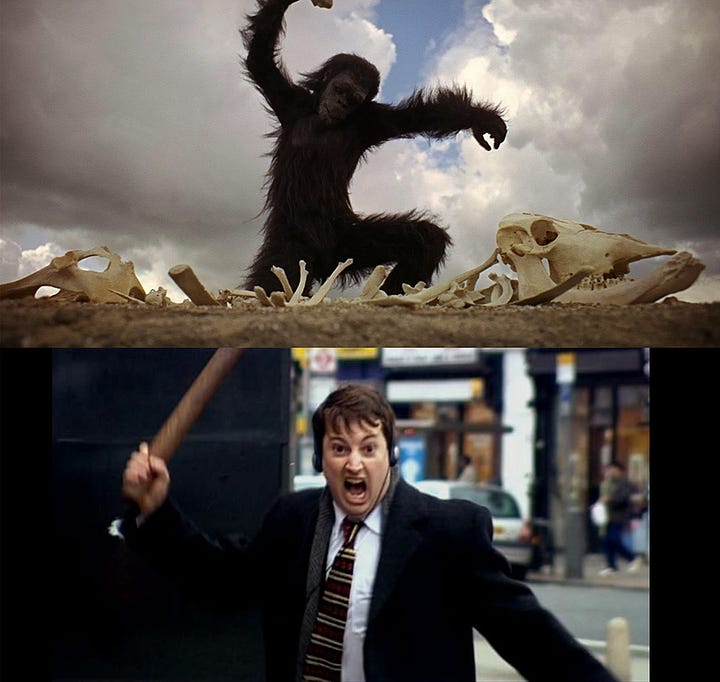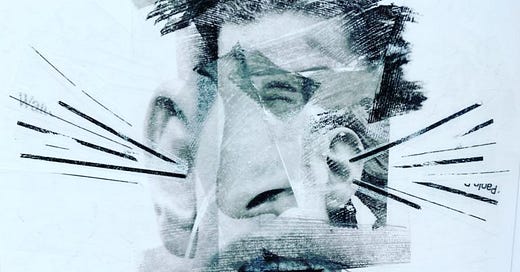Hey y’all,
Let’s begin with a simple question: Do you hear an internal monologue?
Meghan and I started watching the British comedy Peep Show last night. The episodes capture the characters’ perspectives by combining first-person point-of-view shots with voice-over narration of their internal thoughts. Effectively, you’re inside the minds of these losers, hearing their non-stop mental chit-chat with themselves. It’s horrifying and hilarious.
I think the show is having a pronounced effect on me because for Friday pizza night the kids requested and sat through the entirety of Stanley Kubrick’s 2001: A Space Odyssey. The movie is almost the opposite aesthetic experience of Peep Show, at least when it comes to words.
In 2001: A Space Odyssey, the majority of the movie is wordless, the story told in images, sounds, and music. “The film has less than 40 minutes of spoken words in its 142 minutes of running time,” writes Michael Benson in his excellent book, Space Odyssey: Stanley Kubrick, Arthur C. Clarke, and the Making of a Masterpiece. “2001 is essentially a nonverbal experience.”


What’s funny to me is that Peep Show and 2001: A Space Odyssey sort of correlate to our self-reported internal states.
Meghan has aphantasia, a rare condition that means she doesn’t see pictures in her head. What she has instead is a very pronounced, constantly running internal monologue. Many aphantasiacs report this internal monologue, or a kind of running radio in their head. (This is why it’s terribly frustrating for Meg when she has three boys in her house talking to her at once — she literally can’t hear her own thoughts.)
In Blake Ross’s essay about what it’s like to have aphantasia, he describes what goes through his mind all day instead of pictures:
“All narration, all the time. An infinite script of milk voice dialogue. When you read a sarcastic essay from me, it is a transcript of this voice.”
Aphantasia turns out to be a kind of superpower for some writers, because instead of trying to translate a picture in their heads into words on a page, they can take dictation from the voice in their heads. (You’d think aphantasia would be a huge disability for people working in visual fields, but it’s not. Read more in my previous letter: “You don’t need a vision.”)

I, on the other hand, do not seem to have much of an internal monologue. I don’t have a voice going on and on in my head all day, and I don’t go around talking to myself, which means that quite often the first time I hear a thought of mine is when it comes out of my mouth in front of somebody else.
Keep reading with a 7-day free trial
Subscribe to Austin Kleon to keep reading this post and get 7 days of free access to the full post archives.





